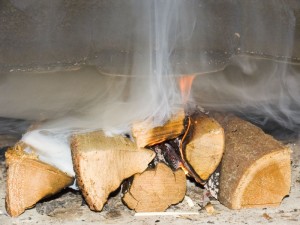
We conduct smoke tests to ensure your chimney is venting correctly
A new fireplace, insert, or stove is a great way to transform any living space in your home by bringing warmth and ambiance to the room. When having a new heating appliance added in your home, however, it is recommended to have them professionally installed and tested to ensure they are safely operating.
One recommended test for newly installed stoves, fireplaces, and inserts is the smoke test. According to National Fire Protection Association Standard 211, all new masonry chimneys must have a smoke test before they can be used.
What is a smoke test?
A smoke test is used when a new fireplace is installed to ensure that the fireplace is drawing and venting correctly. During the smoke test, a blowtorch is used to warm the flue and establish flue draw. Next a smoke pellet with a discernible odor is inserted. The smoke – and the odor – created by the pellet are one way we can tell how the fireplace is drafting.
Once the pellet has been lit, the first step is to wait and see if smoke is rising from the chimney. Once this smoke is seen, both the top and bottom of the flue will be sealed off, including closing all ash covers, doors, pits, and vents. This traps the remaining smoke inside the flue. Our chimney sweeps will then evaluate the interior and exterior of your chimney and home to ensure there are no leaks. If any leaks are found, repairs can be quickly made and evaluated.
During the smoke test process, we take the time to answer any questions you may have and explain each step of the process before we do it. We believe that this commitment to customer education allows homeowners to more fully understand and confidently and safely operate their heating appliances.
Why is a smoke test important?
While a smoke test may seem unnecessary, it is actually an important part of chimney safety. When a new fireplace is built or a stove or insert is installed, it is important to ensure that the byproducts of combustion are able to fully, easily, and correctly vent from the home. By using a smoke pellet, our chimney sweeps can identify any areas with defects or flaws; left unrepaired, these flaws could allow dangerous gasses such as carbon monoxide to silently seep into your home.
Smoke tests are also a tool for protecting your family against a chimney fire. Chimneys that vent incompletely are at greater risk for developing large pockets of creosote, a highly flammable byproduct of combustion that is the leading cause of chimney fire. By having the smoke test done on your new fireplace, you can rest assured that it is venting properly and minimal creosote will find its way into your flue.
If you’ve recently built a new fireplace or had a new stove or insert installed, call Jack Pixley Sweeps to schedule a smoke test. Not only will it make sure that your new heating appliance is venting correctly, but it can help protect your family’s health and safety. Contact us today to schedule your smoke test appointment!
It’s very important to keep up with dryer vent cleaning, as the built up lint is a fire hazard that endangers your house and everyone in it. Call Jack Pixley Sweeps to schedule an inspection and cleaning of your dryer vents to help you maintain a safer and more efficient dryer.
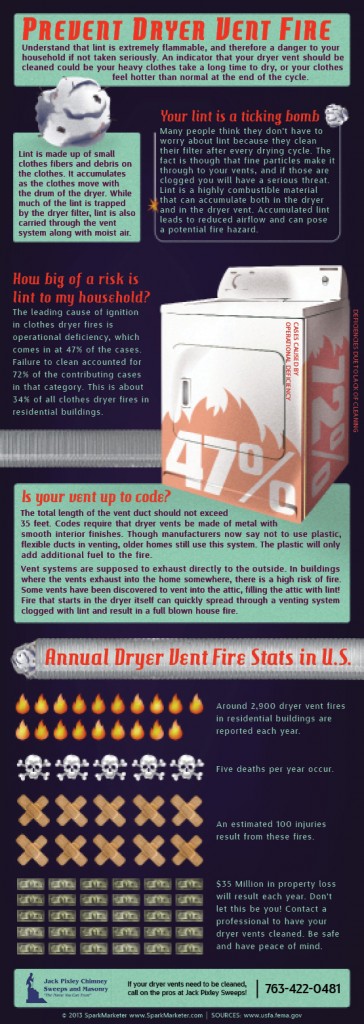
If you have any questions or would like to schedule an appointment, please give us a call! We look forward to providing you with a lifetime of high-quality, professional services!
Creosote Is Dirty And Dangerous
Most of the time, when chimney professionals like Jack Pixley Sweeps bring up the subject of creosote, we’re talking about fire safety. And there’s a good reason for that: Excessive creosote buildup — particularly if those creosote deposits develop into second or third stage creosote — can lead to a serious fire hazard.
But that’s not the only reason creosote buildup is dangerous, and why regular chimney sweeping is an important part of safer chimney use. Creosote itself — and the various chemicals that make it up — has been shown to be toxic.
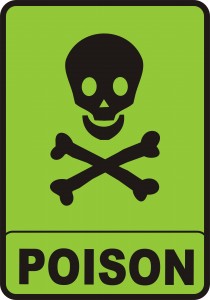
Creosote exposure can cause skin irritations, as well as breathing difficulties.
Creosote Development
Several different materials get dubbed creosote, including the dark liquid used to treat commercial lumber materials like railroad ties. The creosote we’re talking about is a chemical deposit that results from burning wood in a heating appliance. Gases rise in the chimney connected to that appliance as the wood burns, and the cooler flue causes condensation, resulting in creosote build-up.
The coal tar creosote used in wood treatment and the creosote in your flue do have something important in common, other than their descriptor: People should avoid prolonged direct exposure to either, because both can be dangerous.
Short-term and prolonged exposure to the chemicals in creosote has been shown to result in an array of health issues, from skin and respiratory irritation to stomach pains and a potential worsening of asthma symptoms, according the Agency for Toxic Substances and Disease Registry.
Limiting Creosote Exposure
Exposure to chimney creosote can happen in different ways. Airborne particles can be breathed in. Chemicals can be absorbed through the skin or — a particular concern with kids — orally, if fingers that came into contact with creosote were absent-mindedly put in your mouth.
Limiting exposure to creosote starts with limiting the development of creosote to begin with, by burning the right materials. Burning green or wetter wood leads to a cooler fire and more creosote — and burning anything else, like trash, can contribute to creosote build-up and give off toxic chemicals, depending on the material.
Sticking to burning kiln-dried or seasoned cordwood only is your best bet. It provides the best, cleanest burn, and is smarter to use both short and long term.
The other key step is having a professional chimney technician clean your flue regularly. During a chimney sweeping appointment, Jack Pixley Sweeps technicians will remove creosote deposits from your flue, using specially designed tools and vacuums to make sure the mess is completely confined and removed. Our technicians are trained to safely handle and safely dispose of creosote, so you don’t have to come into contact with it.
If you want to know more about creosote — and limiting and removing it from your chimney system — give Jack Pixley Sweeps a call. We’re always happy to help our clients!
The National Fire Protection Association (NFPA) reported 365,000 and 2,380 deaths associated with home structure fires last year alone, 50 of which were in Minnesota. That bears a call to attention when it comes to planning for an escape in case of fire. Fires can take over a home in a matter of seconds, which means that could be all the time you have to get out. Here are some tips to help you have a plan in case of fire.
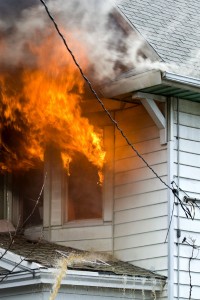
One preventative measure you can take is to schedule annual cleaning and inspection of your chimney — even if you don’t use it.
Sound the alarm. Install smoke detectors outside of every room in the house and in central gathering places. Check those batteries every 6 months by pushing the test button on each detector.
Know your way out. You should have at least two exits for each room in the house (through a door or window). If you have children, it’s helpful to draw out a map of your home, marking all the doors and windows clearly and drawing up your escape route, especially from your child’s bedroom. Make sure you have a fire safety plan in place that everyone in your home knows about. We all hope to never have to use our plans, but it can make the difference between life and death.
Know your numbers. You shouldn’t be the only one who knows which house is yours. City codes usually state that your house number needs to be displayed clearly outside your home, either on the front of your home or on the mailbox so it can be seen clearly from the street. This is for safety purposes, that way the fire department can find your home quickly. And speaking of the fire department, make sure everyone in your home knows the correct phone number in case of emergency.
Know your appliances. Keeping your fireplace and chimney functioning properly is important to us because your safety is important to us. The NFPA and CSIA recommend annual chimney inspections and cleanings of to ensure that your chimney isn’t going to be the cause of a home fire. Contact your local fire department for other tips and measures you can take for fire safety.
To those of us living in the Minneapolis / St. Paul areas, keeping warm is a top priority for more of the year than we’d like to admit. Many homeowners use wood stoves and fireplaces to supplement central heating, so it’s important to know how to care for your wood burning appliance. If you have a wood stove, some of the following tips can be helpful.
First off, let’s cover the don’ts. Never burn driftwood, artificial logs, treated wood, or trash, which could contain zinc, sulfur, plastic, or lead. It might be easier to assume that if you can seal the door, you’re not breathing anything dangerous, but these things can emit harmful gases when burned that could start a chimney fire or compromise your air quality.
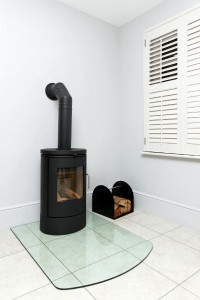
Make sure that any wood you use is properly seasoned. Wet or green wood will cause additional creosote buildup.
As with any wood burning appliance, it is always best to burn only dry, seasoned wood. This will maximize heating efficiency and minimize creosote buildup. Small, hot fires that range between 300°-400° degrees is what you’re aiming for. If you have a stack thermometer installed, it’s easier to maintain this temperature for optimum efficiency and the least amount of pollution. Another way to determine if your fire is burning hot and clean is to take a look outside. The less smoke you see coming out of chimney the better.
Keep those air-intake vents clean. Ash can collect around the vents, so be sure to remove it regularly. Not only will this help you keep your fire hotter, it will also mean that your fire won’t require as much oxygen to burn. (And guess where the oxygen comes from? That’s right, your home.) Another thing to keep in mind is that other exhaust appliances can interfere with the air consumed by your wood stove. If the fire doesn’t have enough air, smoke will reverse its flow and enter your home.
Make sure your stove is safe. A safety tested wood stove will bear an NFPA (National Fire Protection Association) label to identify it as being in compliance with building and safety codes. At Jack Pixley, we are equipped to install top-quality wood stoves that adhere to safety codes, and we’re certified to keep your stove and chimney clean and in proper working order. We know what to look for and where, and are here to look out for your safety.
A wood stove can be a great asset for keeping your home warm, but remember that heavy use also means faster creosote buildup. Creosote buildup is a part of every wood burning appliance, no matter how efficient your fires are, and it’s important to keep the chimney clear of creosote or any other obstruction. The Chimney Safety Institute of America recommends having your wood stove and chimney inspected and cleaned at least annually to ensure that every component is working properly and safely. Don’t hesitate to give us a call at (763) 422-0481. We also offer convenient online scheduling if you’re strapped for time.





